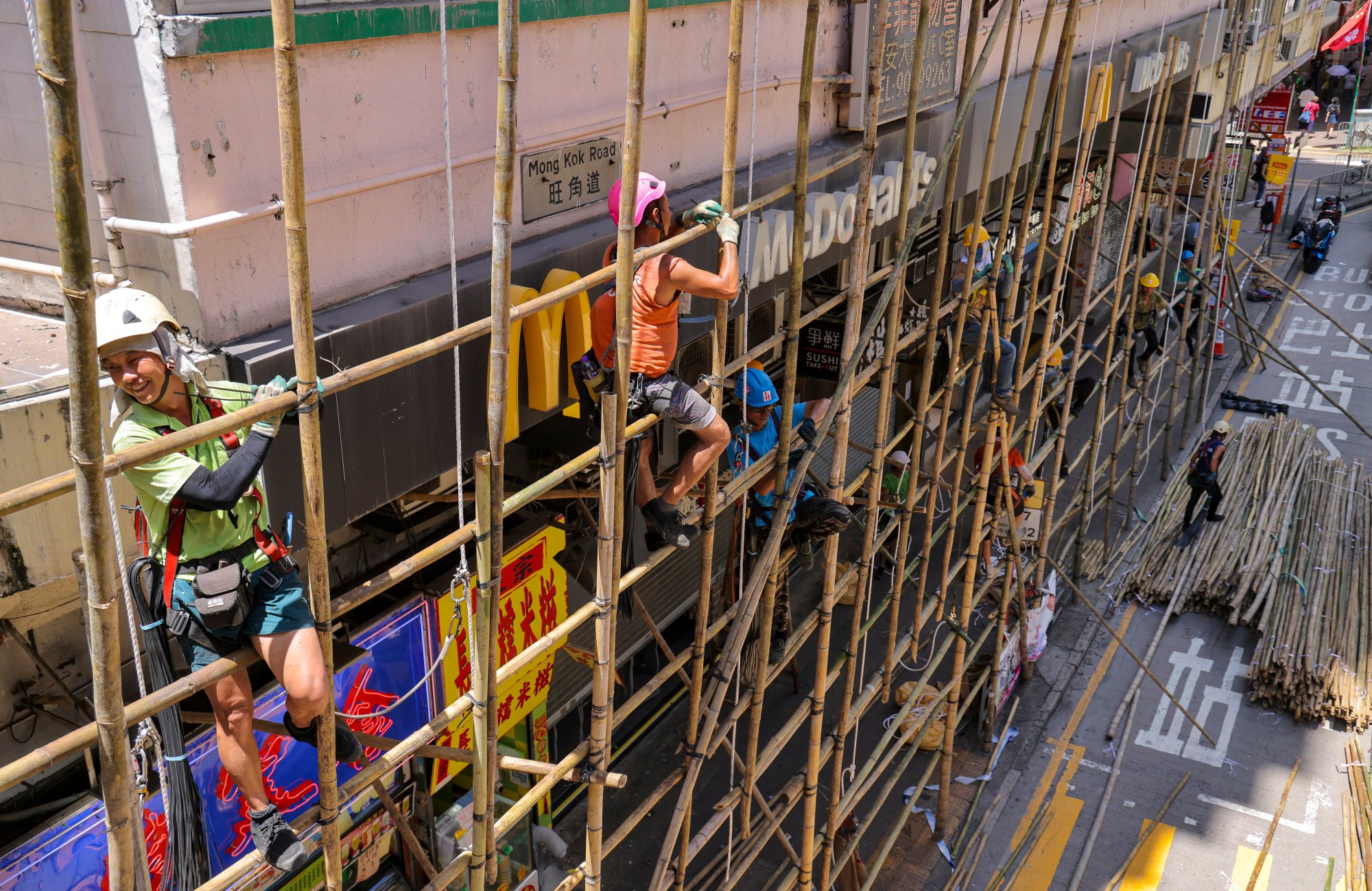
Over half of 7,000 old Hong Kong buildings with inspection notices have yet to be reviewed, official says after second case of falling debris
- Director of Buildings Clarice Yu reveals 4,000 old structures have not carried out compulsory inspections
- Figures released after concrete and plaster chunks fell off residential building, raising safety concerns
Owners of more than half of 7,000 old buildings in Hong Kong have yet to carry out inspections ordered by authorities, a government official has revealed, adding the penalty for failing to comply may be increased.
A day after fist-sized chunks of concrete rained down from a 17-storey building in Mong Kok, Director of Buildings Clarice Yu Po-mei on Thursday said checks on 4,000 structures at least 30 years old had not yet been completed.
“But many of them are undergoing construction work, including some 2,000 using the Operation Building Bright service,” Yu told a radio show, referring to a scheme that helps owner-occupiers carry out ordered inspections, with a price tag of HK$6 billion (US$766 million) in the latest round.
The figures were made public a day after Secretary for Development Bernadette Linn Hon-ho told the Buildings Department to look into blocks that had not acted on inspection notices. Hours earlier, pieces of a canopy of a flat in 17-storey Po On Building fell onto a Mong Kok street, the second such incident at the block in four days.
The owners’ corporation of the 57-year-old building met officers from the department to discuss speeding up repairs, a source told the Post.
The building was issued an inspection notice in 2014, but owners only received a maintenance subsidy from the Urban Renewal Authority (URA), a statutory body tasked with addressing urban decay, in 2021, three years after their application in 2018.
The inspection report was submitted this past March with recommendations about repairs, and the owners are expected to discuss the tendering process for a contractor later this month.
Under the mandatory inspection scheme, owners of buildings aged 30 years or older must appoint a registered inspector within three months of receiving statutory notices, carry out the review within six months and the repairs within a year.
But the government would give owners a grace period for showing efforts to carry out the inspection, such as applying for subsidies, a source said.
Asked whether the owners of Po On Building took too long to submit their report and if the department would step in, Yu said the government had to give them time to arrange the tendering process.
“We will follow up on their progress,” she said. “In case they do not proceed, the government has the statutory power to intervene.”
Authorities would also review whether penalties for failing to act on mandatory inspection orders should be increased, Yu added.
Under the Buildings Ordinance, anyone who fails to comply faces a maximum fine of HK$50,000 and one-year imprisonment. Offenders must also pay HK$5,000 each day until the order is carried out.

Yu said the department would review the list of old buildings that had been issued notices and decide on a plan to follow up on those deemed at greater risk but had not yet started carrying out checks. Measures would include issuing warning letters and discussing the situation with flat owners, she said.
Authorities could also begin emergency construction work if buildings failed to comply with the order and owners would bear the costs.
Wednesday’s incident was the second at Po On Building. On Sunday, a truck driver was injured after an illegal canopy attached to a flat on the 16th floor collapsed. The flat owner and chairman of the building’s owners’ corporation were arrested that day on suspicion of allowing an object to fall from height. They pair have been released on bail pending further investigation.
The department said it carried out emergency repair work that day, but plaster bits from the same flat fell on Wednesday. Government contractors then installed scaffolding and a safety net outside the 16th floor.
Yu said officers had removed loose items from the canopy, but it was located at the top of the building, making work difficult.
“We followed the emergency protocols to handle the incident … We cannot rule out that we did not notice minor cracks,” Yu said. “We have learned a lesson. When similar cases happen, we need to review if more needs to be done.”
Government contractors usually only repaired parts of a building that posed immediate danger to the public and left the rest for owners to handle, including fixing plaster, she said, adding it was rare for chunks to fall off.
Speaking on the same radio show as the buildings director, lawmaker Vincent Cheng Wing-shun called the delay in repairs unacceptable and urged the government to ask all owners to carry out any ordered inspections within three years. Officers should regularly check their progress, said the legislator for the Kowloon West constituency.

Vincent Ho Kui-yip, chairman of the building policy panel at the Hong Kong Institute of Surveyors, said it was “undesirable” the owners of the Mong Kok building had not yet completed the inspection nine years after receiving the notice.
“It [was given the order] four or five years before the Covid-19 pandemic took place, but they don’t seem to have taken any action,” Ho said. “We should find ways to step up enforcement. We should help those with difficulties and prosecute those who do not have reasonable arguments [for delaying repairs].”
The URA said it prioritised those subsidy applications that had hired consultants or were tendering for contractors, but the owners of Po On Building had not employed any professionals when they applied in 2018.
The owners received subsidy approval to proceed with repairs in March 2021 and issued a tender for consultants that November, but progress stopped due to Covid-19 and they could only resume in September last year, a URA spokeswoman said.

